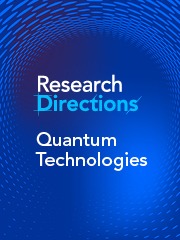Context
Quantum technologies exploit uniquely quantum behaviour of light and matter to achieve functionalities and performance in applications such as computing, navigation, communications, sensing and imaging that are not achievable by conventional, classical means. These “second-generation” technologies are under rapid development and commercialisation, with an accompanying need for assurance by test and characterisation.
Credible test and characterisation bring reproducibility and verifiability, which can only be underpinned by standardised metrics, test methods and references. Methods of validation, interoperability standards and application-oriented benchmarks are also needed. In order to get a functioning ecosystem of standards, standards development has to keep pace with research and product development.
There are risks associated with rapid or premature standards development. Subject experts and start-up companies are often inexperienced in standards development and unaware of the benefits that standardisation can bring. They are also limited in time, among other resources, which makes it likely that key stakeholders are not involved, innovative solutions are inadvertently excluded from standards and the developing market is stifled. Similarly, if standardisation progresses too rapidly towards product specifications or in areas where technical development has not progressed beyond proof-of-principle, the standards developed will not be fit-for-purpose.
On the other hand, as technologies are commercialised and then commodified, the market will be stifled if there are no clear criteria for product selection or if there is a proliferation of incompatible components and subsystems in the supply chain.
Hence, there is a need for national, regional and international co-ordination among quantum technology stakeholders: companies, large and small, end-users, researchers, test laboratories, standards development organisations, governments, employee representatives and concerned public interest groups. Trade bodies and governments have an interest and an obligation to ensure that all interested groups are, as far as possible, directly represented in the standards development process.
Similarly, there is a need to match the progress of standards development with the level of technological and commercial development. Standardisation readiness level (SRL) is a concept developed by the US National Institute of Standards and Technology (NIST), which allows standards developers to assess proposals for standardisation in terms of technical maturity (i.e., technology readiness level), market maturity, the size of the community developing the technology and the capacity of those interested in standards development for the work involved. Complementary questions, on what exactly is being standardised, what form of standard (from being purely informative to tightly specified, who the intended users of the standard will be and what value the standard might bring to its users, also need to be answered).
There is one more consideration before starting work on a new standard: is there an existing standard or standards-development project with(in) the same scope? A wide survey, including global standards bodies (ISO, IEC, ITU-T), regional bodies (CEN, CENELEC, ETSI), national bodies (BSI, ANSI, DIN, etc), expert bodies (eg IEEE, ETRI) and trade bodies (eg QED-C, EuropeanQuIC), should find existing projects, since all standards bodies want to attract involvement and comment on their draft standards. Quantum technologists might have already discussed and started standardising in the standards body that they have experience with, or where seemed most appropriate.
There are many routes to involvement in standardisation, and several organisations, including NPL, can help. The most obvious route to getting involved is to contact one’s national standards body (NSB, e.g., the British Standards Institution) having found a seemingly relevant committee. The NSB will advise on how to get involved.
So, what standards and what type of standards are needed urgently? Such a stark question can be addressed by first asking what are the industri’s immediate issues that have to be addressed? Conversely, are there examples where standardisation has come too early, stifling innovation or competition, or to too late, leaving a confusion of terms or form factors?
Here are two potential responses, illustrating very different SRLs:
-
1. Colour centres such as NV centres in diamond need highly homogenous (flawless) and isotopically pure diamond. There is a growing market for detectors using the technology and researchers evaluate NV centres as potential qubit technology. There are few suppliers at present, but fabricators are interested in adding them to their product range. The process of creating colour centres is still in early, rapid development, but the materials themselves are well understood. This suggests that, if there is enthusiasm among suppliers and users, test methods that will support bespoke specification of materials would be appropriate at this stage.
-
2. Connecting quantum processors to scale processing power will require transmission of entangled qubits (distributed entanglement). Laboratory experiments have shown that entanglement of photons can be preserved over tens of kilometres, but reliability of conversion between static and flying qubits is nowhere near high enough for shared processing. The community of developers is growing, but it is not a market ecosystem. At most, it would be appropriate to ensure that the language used in describing distributed entanglement is agreed in a vocabulary standard.
In addition to these two examples, I invite contributions to identify industries, their particular needs, and their associated challenges in the standardisation process.
How to contribute to this Question
If you believe you can contribute to answering this Question with your research outputs, find out how to submit in the Instructions for authors (https://www.cambridge.org/core/journals/research-directions-quantum-technologies/information/author-instructions/preparing-your-materials). This journal publishes Results, Analyses, Impact papers and additional content such as preprints and “grey literature.” Questions will be closed when the editors agree that enough has been published to answer the Question so before submitting, check if this is still an active Question. If it is closed, another relevant Question may be currently open, so do review all the open Questions in your field. For any further queries check the information pages (https://www.cambridge.org/core/journals/research-directions-quantum-technologies/information/about-this-journal) or contact this email ([email protected]).
Competing interests
none.





